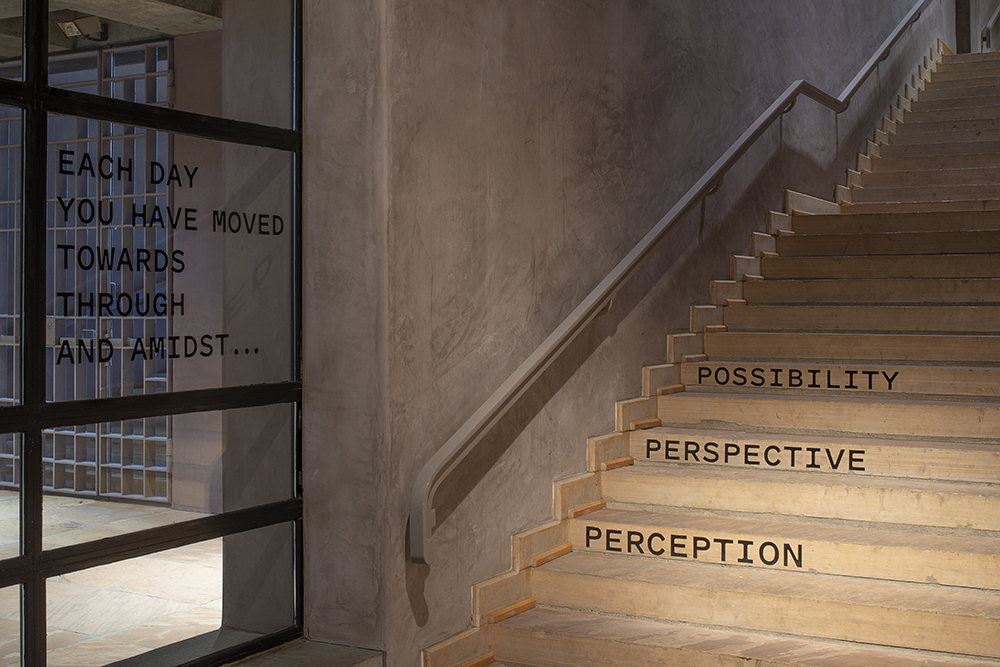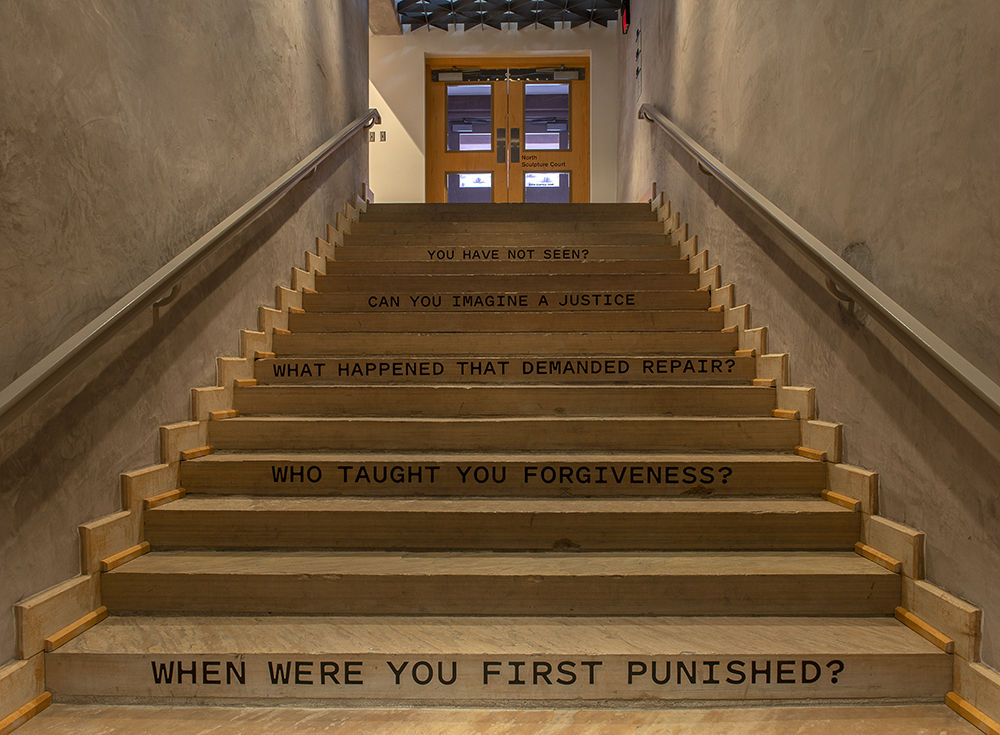Visitors challenged to share reflections at ASU's 'Undoing Time' exhibit
Theater professor created interactive installations that focus on the viewer’s journey
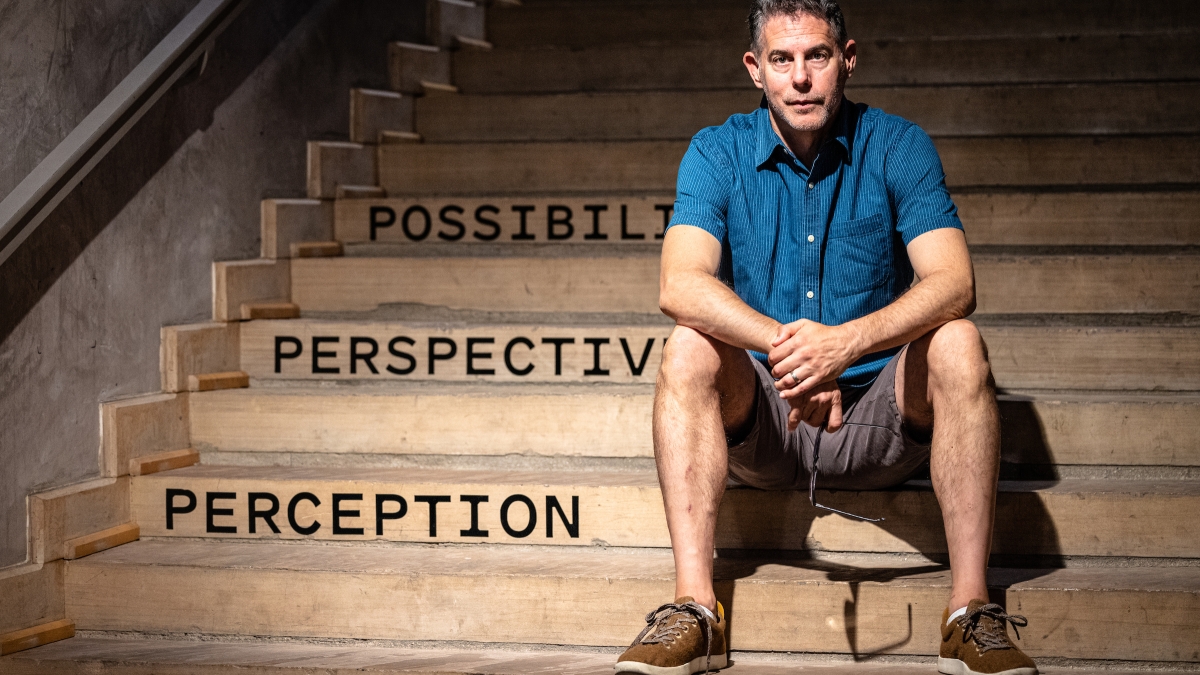
“Undoing Time: Art and Histories of Incarceration,” the social justice exhibition at the ASU Art Museum, asks viewers to do more than contemplate the artworks that address mass incarceration.
The show, the first ever to take over the entire museum, wants visitors to be actively engaged in thinking about the history, the future and their own relationship to the crisis.
Michael Rohd, one of the 12 artists in the show, focuses on the viewer’s journey throughout the exhibition.
“The team approached me a few years ago about being in a conversation about how an audience might move through the museum in different ways than they generally do,” said Rohd, an Institute Professor in the School of Music, Dance and Theatre at Arizona State University.
“I focus on the relationship between the visitor and the architecture of the space and the thematic material of all the works in general.”
Rohd also is the founding artistic director of the ensemble-based Sojourn Theatre.
“They asked me to do this because I’ve done a lot of work in participatory tactics in my performance work, so I have a sense of how people will interact with these things,” he said.
His text-based work challenges viewers in the spaces in between the museum galleries — stairwells and hallways. The words ask people to think about the issue, and to share their reflections in two interactive installations.
Video by Ken Fagan/ASU News
Rohd answered some questions from ASU News about his work in the show, which runs through Feb. 12.
Question: How did you start working on your part of the exhibit?
Answer: I started doing research on all the artists as well as the history of mass incarceration.
I was really moved from the beginning in how you invite an audience to consider the work that the artists have put up and have their own reflection process. So they’re thinking about the material not just as something they’re witnessing, but also thinking about their own experience of it and their own experience of this issue in the world, whether that’s been that they’re aware of it, or engage with it or lived it.
Q: Did you observe how visitors move through the museum?
A: I went to previous exhibits here and watched how people moved through to understand how they interacted with the architecture here.
I did research on ways that artists have worked with participation in museums. There’s a long tradition of that in museum work, and I’ve seen some of that as a visitor.
Children’s museums have a long history of playful participation, and I’m generally pretty interested in playfulness in participation.
Michael Rohd created an installation that challenges viewers to actively and immediately reflect on the exhibits in "Undoing Time." This text is just outside the first gallery. Photo by Craig Smith
Q: How did you decide to create the text on the stairwell near the first galleries?
A: First, I spent some time in the museum thinking about interstitial spaces, or journey spaces. Each gallery has an artist. Where are folks moving?
So the first thing I did was place this text here (near the stairs): "Each day you have moved towards, through and amidst ..."
So as people come out of these first couple of galleries they would encounter this text. You’re the "you." So it’s immediately making "you" not just the person looking, but suddenly you’re involved in the journey. It’s saying, “You have done this thing.” So it’s asking you to reorient a little bit conceptually.
This prompt finishes on the staircase – “perception, perspective and possibility.”
Q: Was it hard to come up with the text?
A: I spent a lot of time working on the text and talking to the other artists in the exhibit because I wanted to make sure I was getting at the themes they were exploring as well as having my own point of view on the journey that an audience member might take. I wanted audience members thinking about these three words as they moved through: perception, perspective and possibility.
I’m really interested in inquiry. I was thinking a lot about how questions could be part of the journey. The exhibits are filled with beautiful imagery, media and story. And I wanted to ask questions.
The first thing I did was come up with the spaces where I wanted the interactions to be. And then I did the content. I knew I was going to use this staircase, and I thought it was a great place for the questions that are related to the content.
Q: Have you ever used a staircase as a medium before?
A: As a theater-maker, I’ve done a lot of site-specific theater. So I’ve staged things on stairways before. I haven’t put text on a stairway before.
Michael Rohd utilized the staircases and hallways of the ASU Art Museum for his exhibit in "Undoing Time." Photo by Craig Smith
Q: You’ve created two interactive components — a hallway in which visitors are invited to write out answers to prompts, and an installation at the end in which they can answer prompts that are projected onto a gallery wall. Why did you decide to include participatory works?
A: I think it’s more and more common that museums offer things that are interactive. I think these two participatory pieces are unique in the way they invite you to interact and the depth of the questions they’re asking you to consider.
I worked really hard to make the invitation language clear. I had many more questions and then I narrowed it down.
This question is trying to understand the main thesis of the entire exhibit. The question is, “Imagine a future in which …” And this person answered, “… our inner lives have not been swallowed by consumerism, technology and fear.”
I do love coming in and reading what people are writing. I come every other week and look at them.
Q: Have you changed the exhibit at all since the show started?
A: No. In theater, you do that a lot. You learn a lot in previews with audiences. In a museum, it’s a little harder because of the object relationship. You’re making objects that have to live in the space for a while.
“Undoing Time,” which runs through Feb. 12, is organized by Miki Garcia, Heather Sealy Lineberry, Matthew Villar Miranda and Julio César Morales, and features artists Carolina Aranibar-Fernández, Juan Brenner, Raven Chacon, Sandra de la Loza, Ashley Hunt, Cannupa Hanska Luger, Michael Rohd, Paul Rucker, Xaviera Simmons, Stephanie Syjuco, Vincent Valdez and Mario Ybarra Jr.
Top photo: Michael Rohd, Institute Professor in the School of Music, Dance and Theatre, in the "Undoing Time: Art and Histories of Incarceration" exhibit at the ASU Art Museum. Photo by Charlie Leight/ASU News
More Arts, humanities and education
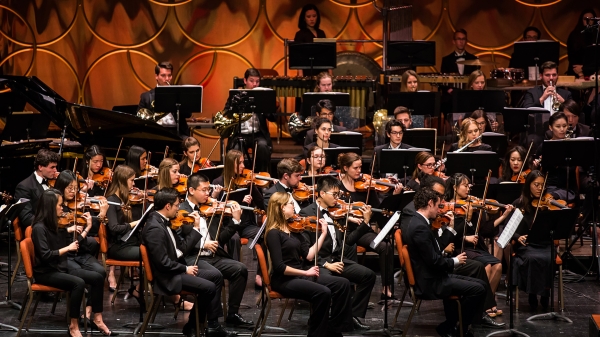
ASU Symphony Orchestra welcomes visionary conductor Jonathan Taylor Rush
Guest conductor Jonathan Taylor Rush will join Arizona State University’s Jason Caslor, director of bands, to lead the ASU Symphony Orchestra in their final concert of the season, “Trailblazers,” on…
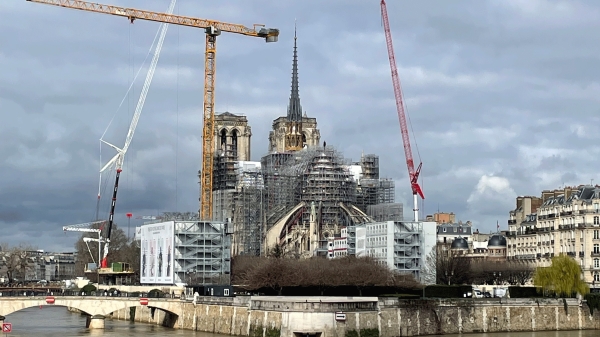
Chemistry classes are key to art student's success
Amanda Barnette has a passion for art preservation. That means that, for the past four years, the Arizona State University student’s schedule was filled with classes that fit her artistic bent:…
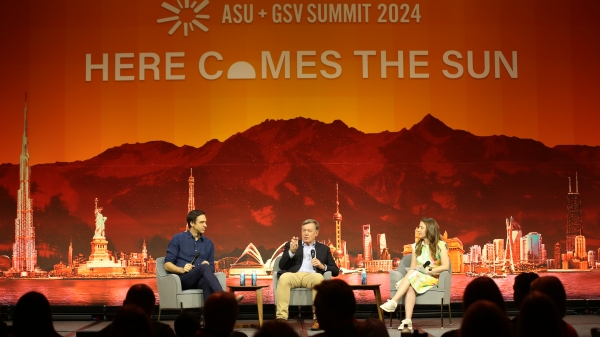
ASU+GSV Summit tackles big questions about AI, technology, education
Editor's note: We'll be updating this story daily throughout the summit. The annual ASU+GSV Summit kicked off in San Diego on Sunday, drawing thousands of leaders for a four-day event that focuses…
